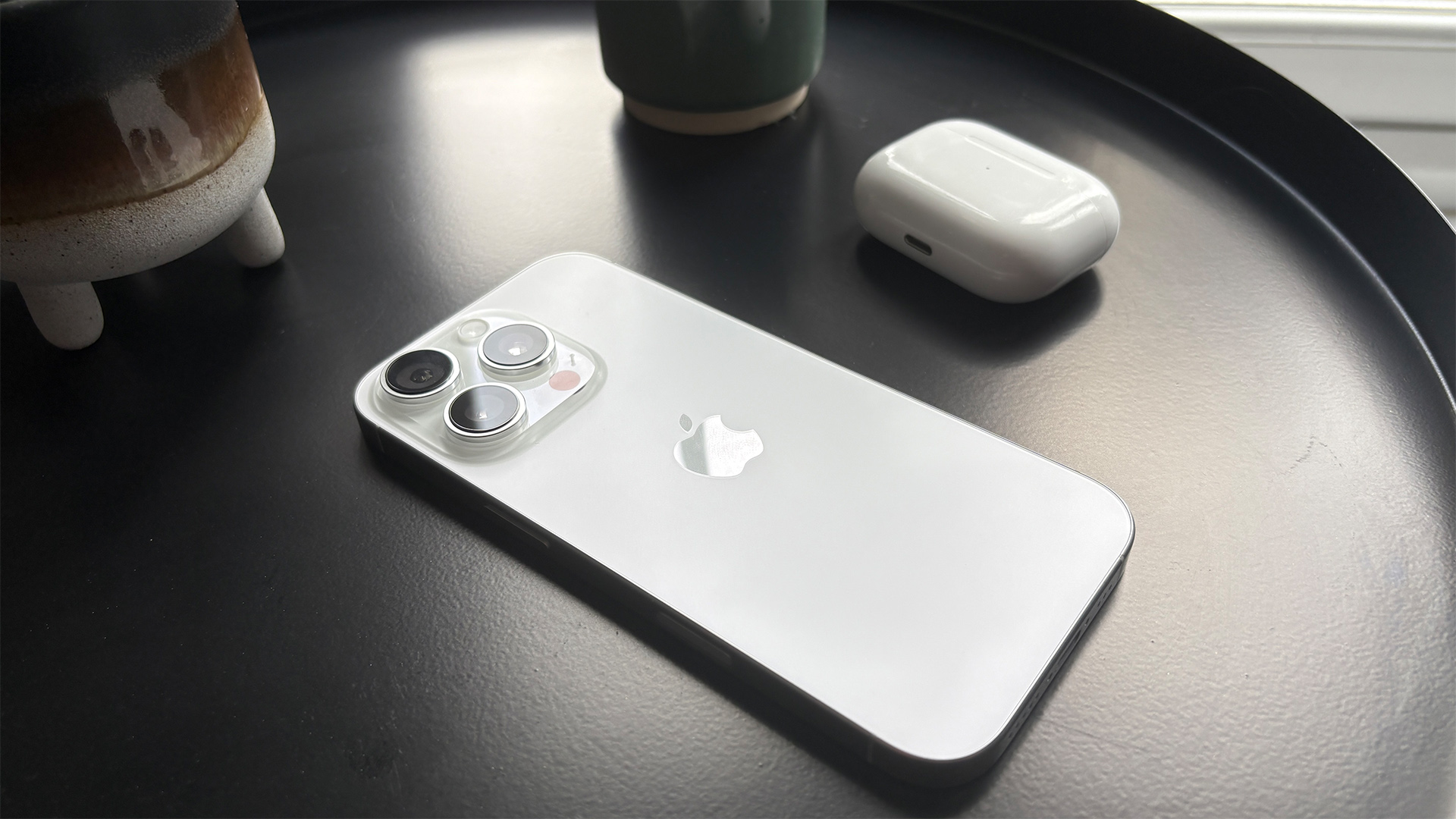QD-OLED TV: What you need to know about Samsung's next gen' TV tech
Everything you need to know about QD-OLED, Samsung's new flat screen TV technology
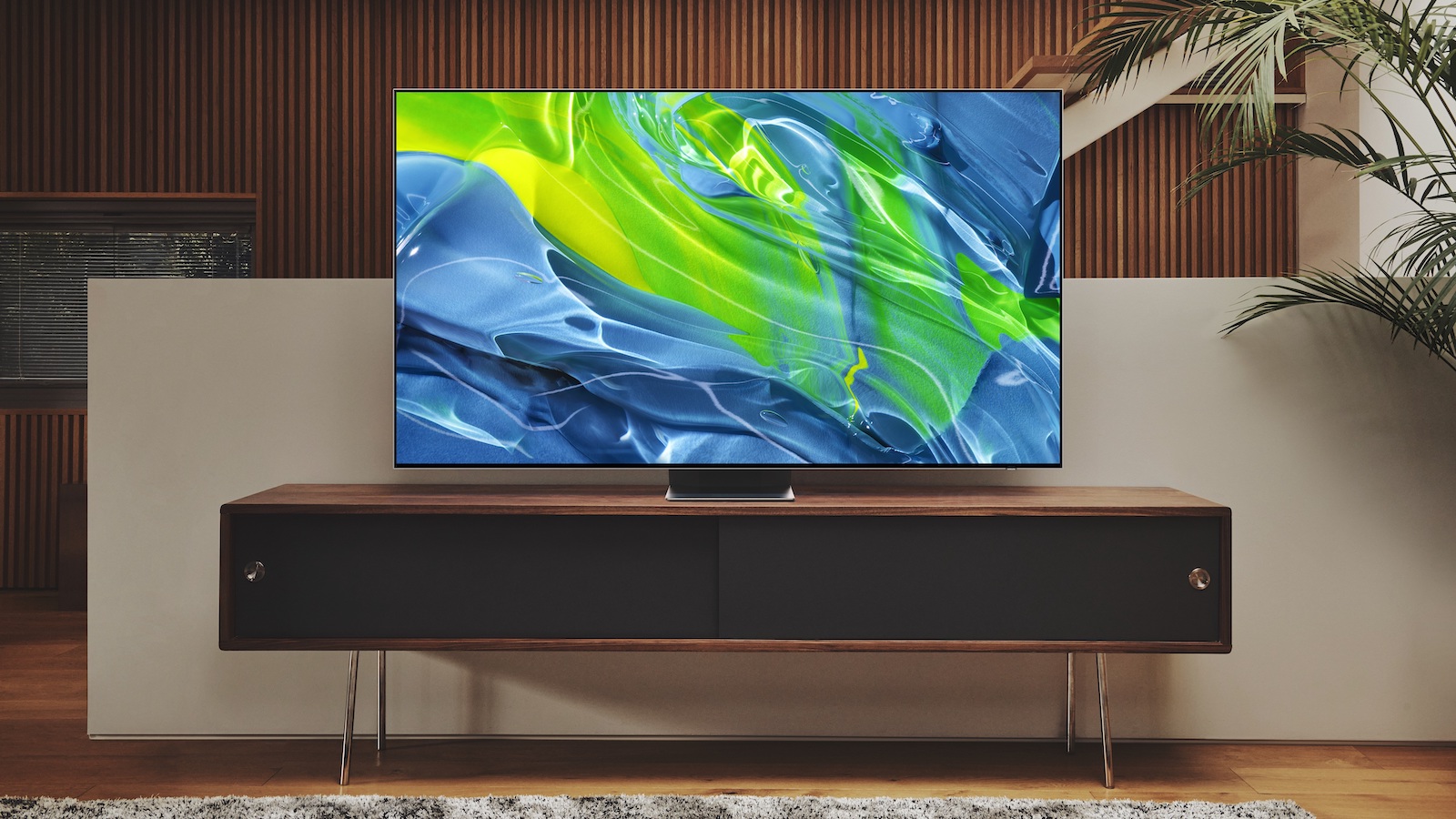
If you've ever wondered whether the terminology used to define flatscreen displays has been intentionally crafted to mislead customers, you're not alone. From endless acronyms that look and sound deceptively similar but have totally different meanings or old technologies that get rebranded with new, more jargony monikers, it can be hard to keep up with the latest technologies and understand just how they differ from one another.
Developed by Samsung, QD-OLED (that the company is commercially referring to as simply OLED) is one of the newest and most exciting kids on the flat panel block. For once, its name represents exactly what it is: a combination of the Quantum Dot (QD) displays, endorsed by market leader Samsung as well as the likes of Hisense, Vizio and Roku, and OLED technology, of which Samsung's arch-rival LG is the dominant player, as the sole supplier of large OLED panels to other manufacturers.
Based on our experience testing both types of TV, we know the two screen types have different strengths and weaknesses. QD-OLED hopes to fix these by combining the two to create that holy trinity of TV manufacturing: vivid colours, high peak brightness without light bleed, and dark, saturated blacks.
But how will it work? Which will be the first models available? And why has Samsung, which has been an avid anti-OLED campaigner until now, suddenly done a U-turn? We'll try to answer all these questions below but first, since QD-OLED is a hybrid, let’s recap the individual components before tackling the whole.
OLED vs QLED: which is the best TV technology?
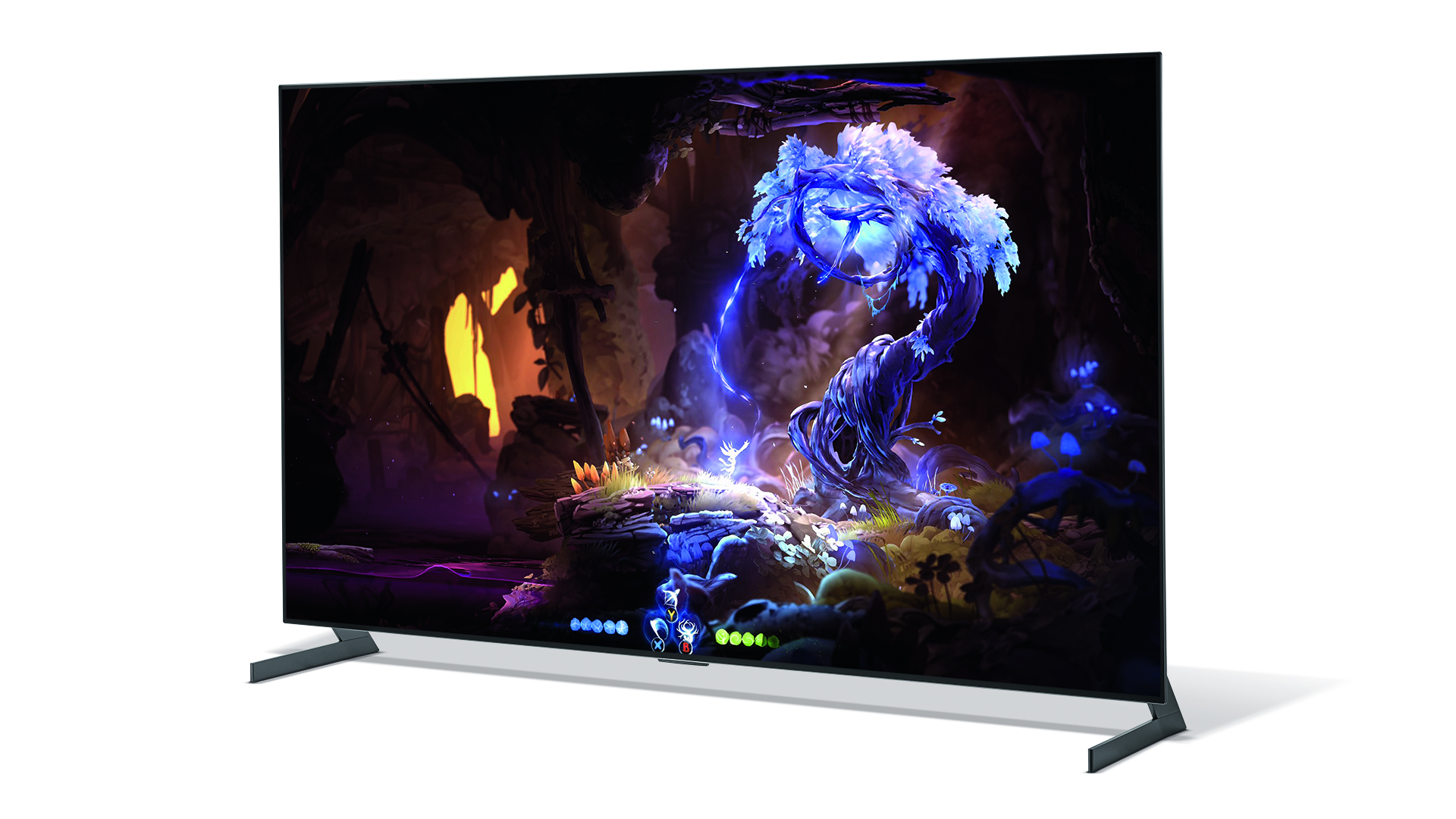
How does OLED work?
OLED (Organic Light-Emitting Diode) is a type of display that uses an organic carbon-based film through which two conductors pass a current, causing it to emit light. To produce an image, an OLED TV combines blue and yellow light from OLED sources to create almost white light. This is then passed through a colour filter made up of red, blue and green subpixels.
Unlike traditional LCD TVs, which rely on a separate backlight that’s then passed through a layer of pixels, each individual pixel in an OLED can take care of both brightness and image creation. Because each pixel is its own light source and can be completely blacked out if need be, this means that a bright pixel can appear next to one that’s black with neither impacting the other. This creates the exceptional overall contrast for which OLEDs are rightly renowned.
And that's not the only benefit. Because the image doesn't need to pass through an LCD matrix, viewing angles are wide, while the overall build of an OLED TV is thin and light because of its simple structure.
The downside to OLED TVs is that they struggle to reach the same peak brightness as even an average backlit model, as each pixel is limited by its size in the amount of light it can produce and by energy absorption from the colour filters. To address this, LG started using a WRGB pixel structure - adding a white subpixel to try and increase brightness levels. Unfortunately, this has drawbacks and can wash out the colour of the other subpixels. Also, as the organic material in OLEDs is not permanently stable, its lifespan decreases at an inverse rate to the amount of brightness it is made to produce. So pushing the white sub-pixel could shorten your TV's life expectancy.
A slightly more controversial issue facing OLEDs is that the organic nature of the panel means it's potentially susceptible to image retention and even burn-in. This is not the consistent, widespread problem that some (including Samsung) portray it to be, though, and we've never experienced it with any of the OLEDs that we've tested or that have been used at home by our reviewers. But it's still understandably a concern for some buyers, and companies take it seriously enough to build in features to reduce the risk of it happening.
As we said above, LG is the only manufacturer of TV OLED panels. It uses these for its own sets, of course, but it also sells panels to other manufacturers such as Sony, Panasonic and Philips. After a quick foray into the world of OLEDs in 2013, Samsung has since focused its attention on developing rival technologies such as QLED. The company has been known to deliberately stoke consumer doubts over the reliability of OLEDs, even going so far as to create a TV burn-in checker tool and encouraging affected customers to trade in their OLED for a QLED.
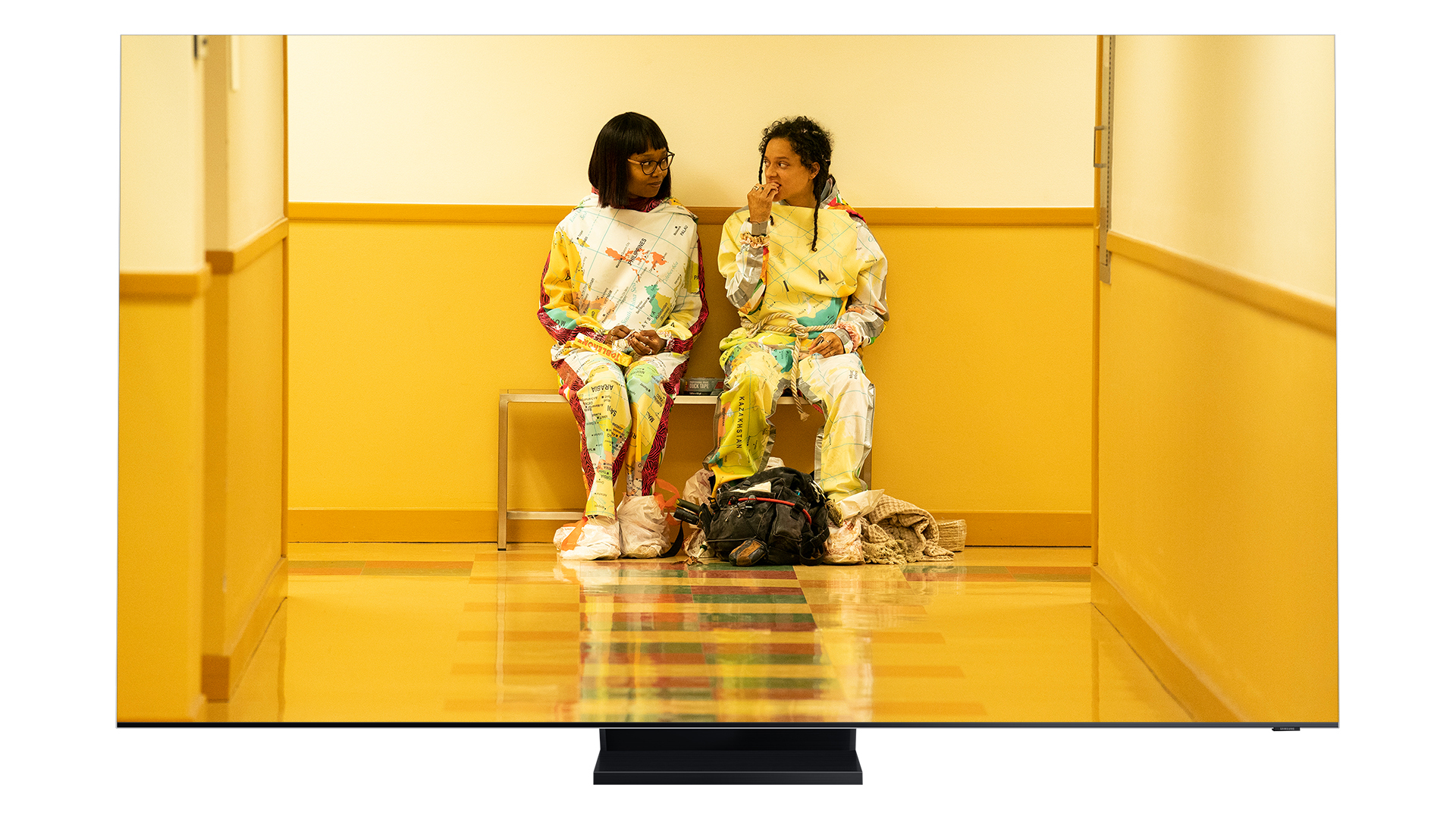
How does QLED work?
QLED stands for Quantum dot Light Emitting Diode and was developed to try and replicate the very best picture quality features of OLED (super-deep blacks, amazing contrast, wide viewing angles) along with far superior brightness and colours. A QLED uses an LED backlight, a layer of quantum dots, an LCD matrix, and a colour filter to create an image.
The quantum dots in QLEDs are tiny semiconductor particles only a few nanometers in size. The dots convert white light into coloured light without loss of energy. The resulting colour depends on the size of the quantum dot itself – larger ones give off light at the red end of the spectrum, smaller ones at the blue end.
In the future, engineers hope to make these semi-conductors self-emissive, like OLED and MicroLED technology but, right now, they rely on being lit from an external source.
The advantage of quantum dots is that they offer significantly improved colours over both traditional LCD and, arguably, even over OLED. At the same time, the backlight and energy efficiency of the dots creates brightness levels that OLED can’t get close to. However, it still can't achieve the deep blacks of an OLED as light can bleed from white areas to bordering dark pixels.
Samsung has sought to increase the contrast of its models by shrinking its backlights and switching from standard LEDs to Mini LED backlights for its premium 'Neo QLED' TVs. As the name suggests, these backlights use much smaller LEDs packed in far higher quantities for more independent dimming zones. These LEDs are so tiny that they resemble grains of sand, but for the ultimate in accurate dimming, it seems you can't beat a pixel-sized backlight.
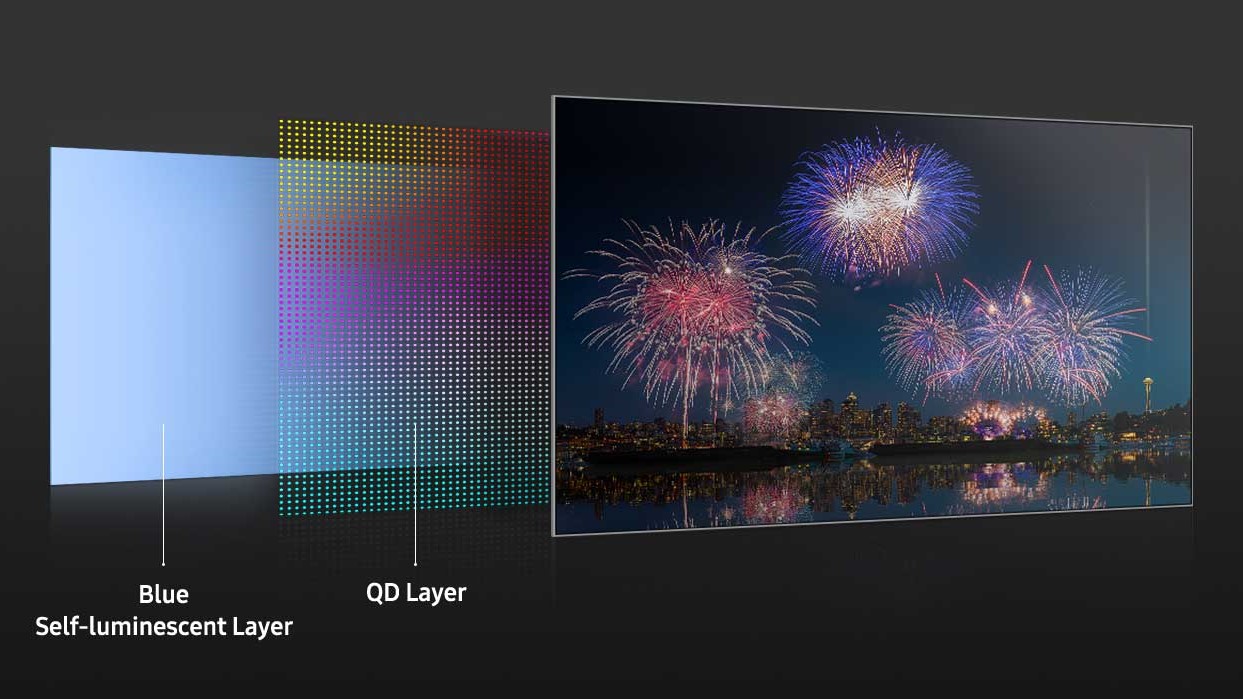
How does QD-OLED technology work?
In QD-OLEDs, a stack of blue OLED material is used to illuminate pixels that contain red and green quantum dots.
Each OLED pixel is divided into three subpixels: a blue subpixel consisting of the original blue OLED material, a red subpixel with red-tuned quantum dots, and a green subpixel generated by a green-tuned quantum dot. These can then be combined to create true white light.
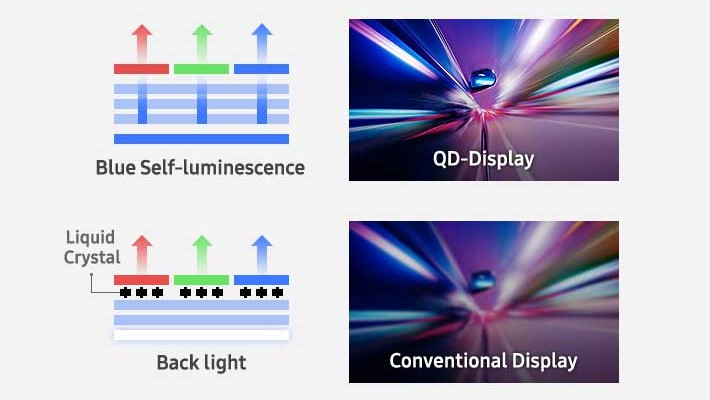
Unlike when using filters, the colour transformations performed by the quantum dots lose virtually no light energy. Using this method of OLED illumination, the new QD-OLEDs are said to appear brighter than current OLED TVs while still maintaining the ability to be fully dimmed.
So why don't OLEDs just use red, blue and green emissive material and cut out the brightness sapping filters? This is mainly due to the practicality of manufacturing true RGB panels at the sizes required of modern TVs. In fact, Samsung's only OLED, the S9C, tried to do this but was deemed commercially unviable before being quickly retired.
If successful, QD-OLEDs could potentially offer the contrast of OLED and the brightness and vibrancy of QLED.
Samsung says that its QD-OLEDs with 4K resolution will have about 8.3 million (3840x2160) light sources that can be controlled separately, enabling a high contrast ratio of 1,000,000:1 and offering enhanced image detail and better HDR performence.
In terms of colour, the company claims that QD-OLED will offer one of the broadest colour expressions among its current crop of displays. Based on the BT.2020 specifications, QD-OLED will express a colour volume above 80% as well as apparently delivering 0.0005 nits blacks and 1000 nits peak white.
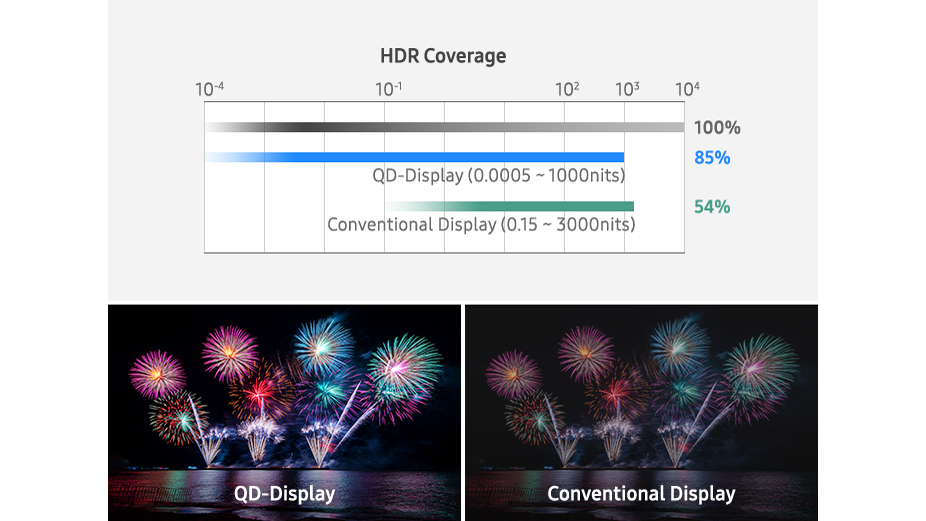
What other benefits will QD-OLED offer?
By omitting an LCD layer, display response times, viewing angles, and screen reflection should be improved compared to traditional LCD displays. Samsung also claims that the screen will offer a 40-50% reduction in "harmful blue light" as the blue OLED material will primarily produce light with a wavelength longer than 455nm.
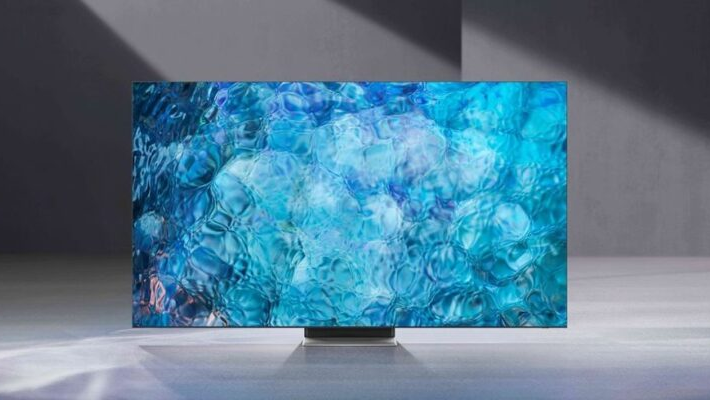
Has Samsung fixed the problems with OLED?
After years of deriding OLEDs, how will Samsung respond to questions of the reliability of the technology it is now adopting?
Reports indicate that by using a stack of three layers of OLED material, Samsung hopes to distribute the burden of brightness production and prolong the QD-OLEDs life expectancy far beyond that of a normal OLED. But there are certainly other factors to consider.
As to how Samsung will approach these thorny issues, we can only speculate. The company may point to its use of OLED displays in phones as proof it has long embraced the technology, or it may just maintain it has now solved all of the problems with LG's large OLED panels with this new hybrid, offering all of the pros of QLED and OLED and none of the cons.
Initially, it seemed that Samsung would just avoid using the term OLED at all, with an early post about the new screen technology on Samsung's website referring to the organic material as the " blue self-luminescence layer" and eschewing the QD-OLED label entirely, favouring the slightly clunky term 'QD Display TV' instead. The company has since done a complete 180 and is unexpectedly embracing the term OLED, without the differentiating QD. What's in an acronym anyway?
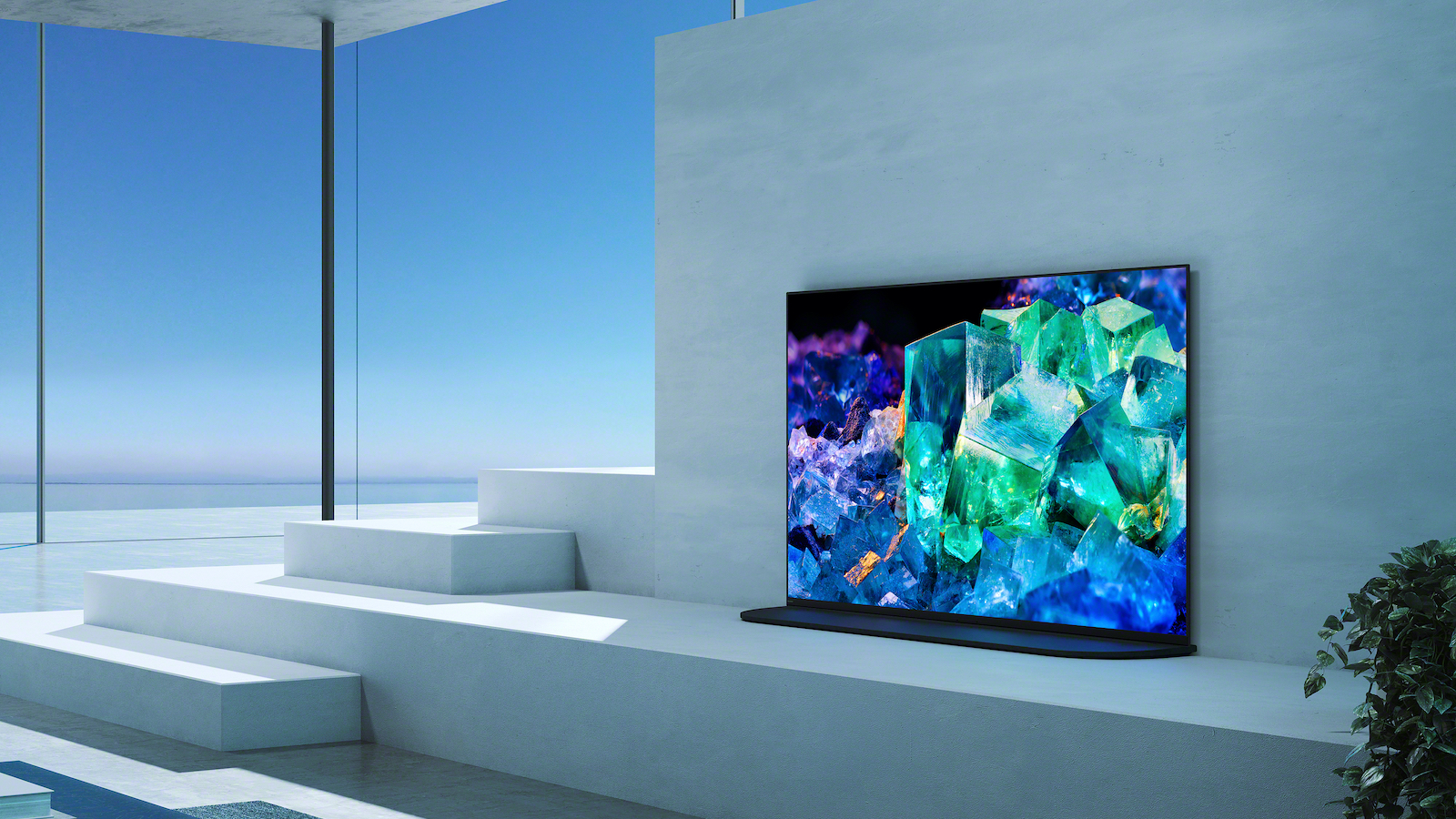
When will the first QD-OLED TVs be launched and how much will they cost?
Samsung's first QD-OLED hit the market in April (or later this December if you're in Australia) in the form of the S95B. The 55-inch QE55S95B launched for £1799/$2100 and it's available for pre-order for AU$3499, however, it can be found for much cheaper now at around £1499. It's a similar story for the 65-inch QE65S95B, which originally retailed for £2799, but can now be found for around £2199. These QD-OLED models have rapidly dropped in price since their launch earlier this year, making them particularly competitive with LG's C2 OLED models, and even undercutting its G2 OLEDs.
There has been a slight hiccup in Samsung's rollout of QD-OLED, with reports from earlier this year suggesting that Samsung Electronics got into a dispute with its manufacturing division, Samsung Display, regarding the price of purchasing QD-OLED panels, according to The Elec (via hdtvtest). As these things are often complicated behind-the-scenes affairs, it's tough to pinpoint what the arrangement is within the companies.
Negotiations between the two companies over the cost per unit were thought to be protracted with Samsung Electronics said to have petitioned to pay a price equivalent to what its primary competitor, LG Displays, charges for its own standard OLED panels. However, it has been suggested that Samsung Display was reluctant to accept these terms.
Matters were complicated by production issues that reportedly resulted in a low yield rate of around 30% initially and that may well impact ongoing availability
with insiders suggesting that QD-OLED manufacturing capacity could "remain limited at 30,000 Gen 8.5 substrates monthly until the end of 2023". The company is said to be considering investing in production with a view to boosting yield rates, but is rumoured to be "holding off" until such times as it can properly gauge "customer reaction to QD-OLED".
Samsung Displays is thought to have invested $11.7 billion in QD technologies since 2019. As it plans to end LCD production by 2022, it will certainly be looking for a considerable return on its new venture. Theoretically, as QD-OLEDs are simpler in design and use fewer materials, manufacturing costs could eventually drop to below that of OLEDs, potentially making them cheaper to buy in the long run.
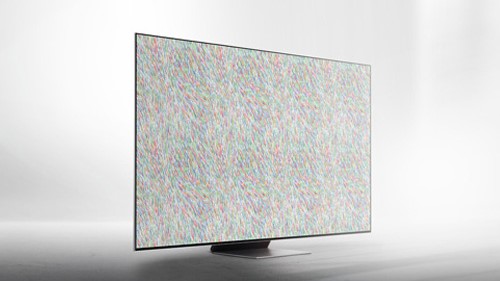
The S95B looks lovely, with a very thin panel section and with a fairly minimalist electronics enclosure that takes the overall depth measurement (without the stand) to just 1.6 inches (4cm).
Unlike most of Samsung's 4K QLED TVs, the S95B QD-OLED sports four HDMI 2.1 sockets that support 4K/120Hz signals from next-gen consoles and high-end PCs. Powered by a 2022 Neo Quantum Processor, it will also boast a 144Hz refresh rate and immersive Object Tracking Sound technology with Q-symphony and Dolby Atmos.
It also features an OLED brightness booster and perceptional colour mapping that Samsung says will deliver brighter, more accurate highlights and realistic, lifelike colours.
At CES, the 65-inch model was recognised as the world’s first true RGB self-emitting Quantum Dot OLED display. The awards blurb commented that it “revolutionises TV by combining the contrast levels of RGB OLED with the colour and brightness of quantum dots for ultimate visuals”. Despite this praise and public interest, Samsung has remained frustratingly coy in publicising its new TV.
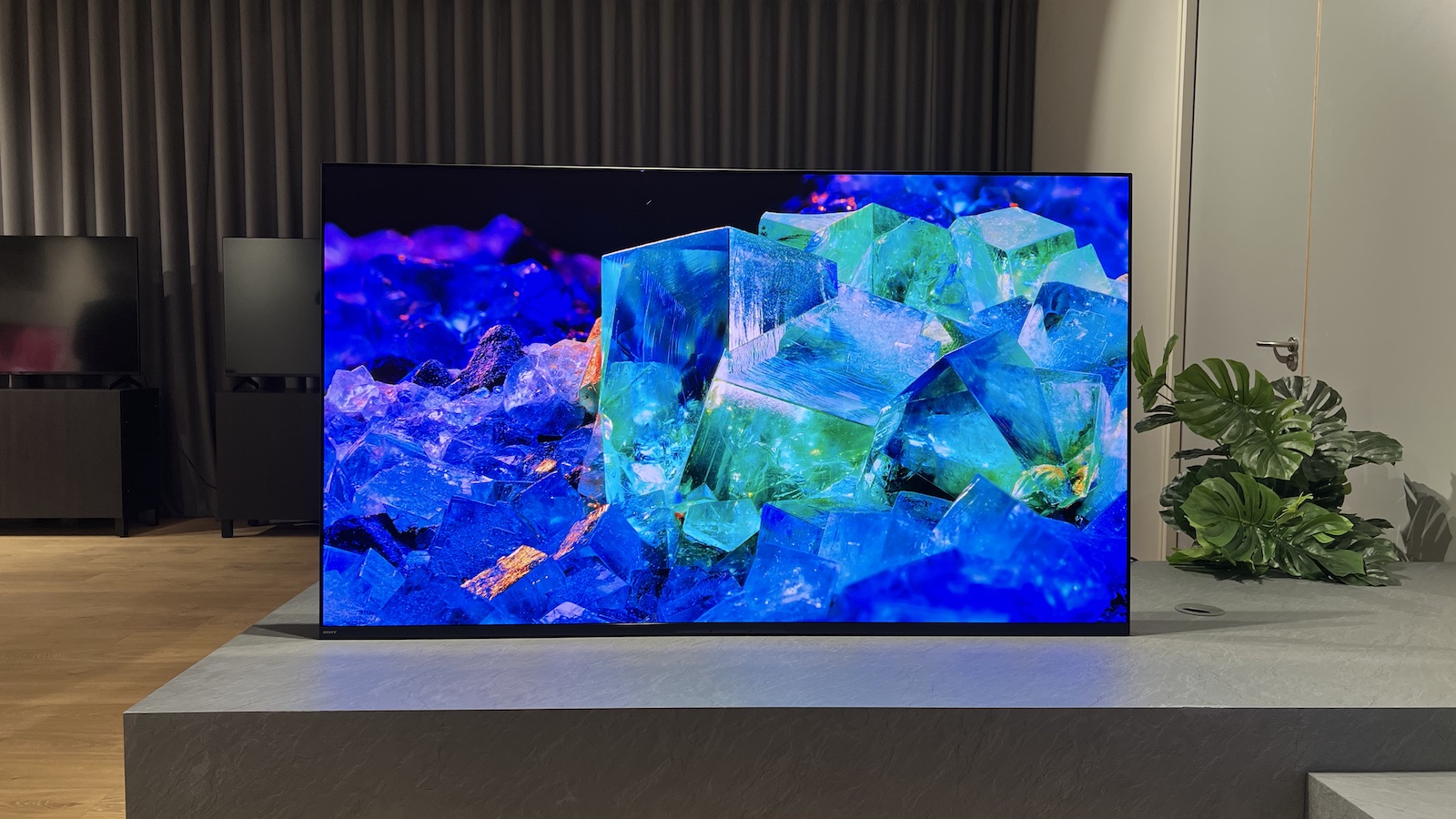
As for an alternative option to Samsung, the only other company in the QD-OLED game is Sony - and its QD-OLEDs are certainly not as affordable. The XR-55A95K is an absolute stunner from Sony, but for £2699 / $3000 (around AU$4500), we'd hope it would be. Sony's QD-OLED has dropped in price, much like Samsung, but still at around £2199 for a 55-inch TV - it's undoubtedly aimed at a more premium market. Sony has some tricks up its sleeve in order to squeeze the maximum out of the QD-OLED display, including a heat diffusion sheet that apparently makes heat distribution uniform, and the company's XR processor.
Interestingly, as well as being brighter and having greater colour vibrancy (particularly in the brightest parts of the picture) than a standard OLED TV, Sony says that its A95K QD-OLED also boasts even better viewing angles. While the A95K is a five-star set, it's not quite the game changer we anticipated, meaning our hopes are high for Sony's potential 2023 QD-OLEDs.
Despite the disparity in pricing between Samsung and Sony's QLEDs, they actually use the exact same panel. While we haven't seen them side by side, the two QD-OLEDs should hypothetically perform very similarly as they share a panel - however, spec sheets and physical performance are often two different sides to the same coin.
- Read our hands on review of the Sony A95K QD-OLED

The real kicker is that Dell actually managed to beat both Sony and Samsung in bringing QD-OLED to the marketplace with the release of its Alienware QD-OLED gaming monitor. Samsung was supposed to be hot on Dell's heels with its own line of QD-OLED monitors, however, these are yet to be seen. It's actually Philips that is bringing out a QD-OLED monitor next with its 34-inch Envia QD-OLED monitor apparently making its debut in early 2023.
MORE
Read the full Samsung S95B QD-OLED review
Read the full Sony A95K review
Take a look at the Samsung 2022 TV lineup: everything you need to know
These are the best OLED TVs available right now
Which Samsung QLED TV should you buy?
Anti-OLED Samsung is about to start selling its own OLED TVs
Get the What Hi-Fi? Newsletter
The latest hi-fi, home cinema and tech news, reviews, buying advice and deals, direct to your inbox.
Mary is a staff writer at What Hi-Fi? and has over a decade of experience working as a sound engineer mixing live events, music and theatre. Her mixing credits include productions at The National Theatre and in the West End, as well as original musicals composed by Mark Knopfler, Tori Amos, Guy Chambers, Howard Goodall and Dan Gillespie Sells.
-
Navanski I think I'll just sit it out. I'll wait for a manufacturer to make a television with a picture that's better than the real thing. Then I'll buy.Reply -
espiceychorizo Nothing new.. Sony already has quantum dot + oled TVs which they dub “triluminous”.Reply -
bristollinnet The only thing that has been burnt into consumers consciousness is that OLED is good, and everything else is second-best.Reply -
julianssss it is funny that they say they never encountered burn-in in their life, it is either they just used the product for only testing or they do not own the product they can say that. Remind me of ostrichesReply -
Reply
Agree. They must never watch the news then. :)julianssss said:it is funny that they say they never encountered burn-in in their life, it is either they just used the product for only testing or they do not own the product they can say that. Remind me of ostriches -
gotty It shocks me that a reviewer can diminish the burn-in problem. They dismiss it as though it doesn't exist, but it does and has caused my my LG 4k OLED TV that cost a month's income to be almost unwatchable after only 4 years - and LG seems to have no interest in resolving it on my set because I'm apparently watching too many programmes with static elements and have the brightness turned up too high.Reply
It is still a problem, but manufacturers now know it is and add things to try to minimise (but not eliminate) it.
Yes, great quality picture, but I wouldn't touch OLED in any form again. -
Luckyfarm Regarding burn-in, according to Samsung, QD-OLED panels will not face any serious burn-in issues or it would not have produced a version for PC monitors where the windows bottom bar is always there with its icons.Reply
Alienware’s QD-OLED monitor comes with a three-year warranty that includes coverage for burn-in, never seen that before with an OLED screen, they never cover burn-in. -
Boglet Reply
In the article you state:What Hi-Fi? said:Everything you need to know about QD-OLED, Samsung's new flat screen TV technology.
QD-OLED TV: everything you need to know about the game-changing new TV tech : Read more
"A slightly more controversial issue facing OLEDs is that the organic nature of the panel means it's potentially susceptible to image retention and even burn-in. This is not the consistent, widespread problem that some (including Samsung) portray it to be, though, and we've never experienced it with any of the OLEDs that we've tested or that have been used at home by our reviewers."
I suspect that is because when they test the TVs are not old/used enough to display burn in - I can arrange for you to see it if you want 😁
I have an LG E6 65" OLED bought in 2017 - 3 months after the 5 year warranty expired (and inspite of using it in Cinema Dark mode and using the panel shift settings) the TV began to display severe burn in where the red BBC News channel logos are displayed
LG just would not entertain the idea of helping and neither would John Lewis who provided the 5 year warranty - I tried all the usual arguments in that it was an expensive premium model and should last much longer than 5 years with no success
While I love the quality and colour representatin of OLED I doubt I will buy such technology again as I doubt it can be improved upon sufficiently to stop this from happening
